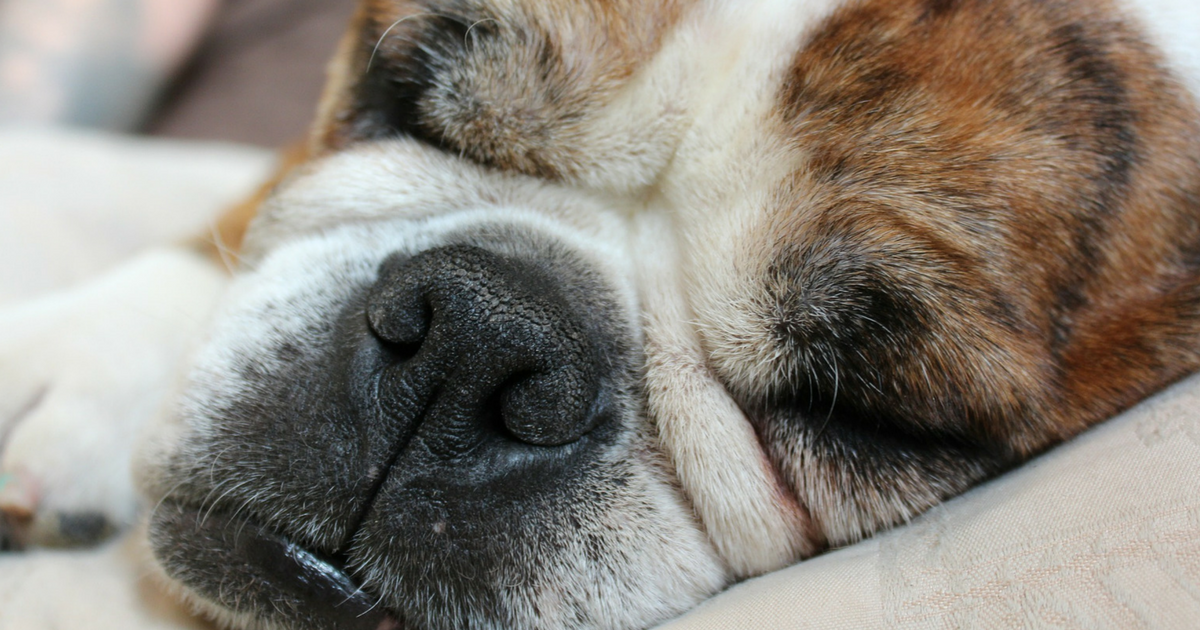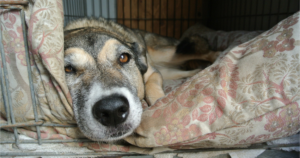
Let Sleeping Dogs Lie – The Best Places for Your Dog to Sleep
Where does your sleeping dog lie? Every dog and owner will fall into a routine, and one way or another your dog ends up finding his or her bed. Whether that is in their crate, on the floor, or in the bed, they know where their nights are spent. But did you know that some places are better for your dog to sleep than others?
When a dog sleeps on hard surfaces, her weight puts pressure on her joints, causing joint and ligament deterioration. As the joints weaken, it can create pain for your pup in the years ahead, making movement difficult. Getting her on a soft bed will maintain a regular temperature so her joints do not get cold (leading to more pain). Here are the best places for your dog to sleep so that she can rest well and avoid joint problems in the future!
Dog Crate

A crate is a great place for your dog to sleep! Not only does a crate guarantee that your dog won’t get into trouble in the middle of the night, but it also provides him comfort and security. If you have decided to crate-train your dog, it is ideal to pad the crate with soft blankets or pillows. Make sure it is cushioned enough to reduce the stiffness he would normally have on the ground. If you crate-train your dog and keep him in the crate during the day or night, ensure that it is the correct size. You want to make sure he is not too big for the crate, inhibiting him from stretching out. When the crate is too small it can cramp your dog and leave him lying in awkward positions. Make sure he has enough room to stand up and move around; but be aware, as having a crate too large where there is excess room can result in him using the extra space to pee.
BONUS TIP: When padding your dog’s crate, be sure that you know your dog’s chewing habits! If you have a dog who likes to rip up things, selecting blankets or towels is the better choice over pillows that have stuffing in them. Stuffing in pillows is easily swallowed by dogs who like to chew and can result in digestive problems or block their digestive tract. When this occurs, if the stuffing cannot be flushed out naturally, it may require surgery to remove the item.
Pillow/Basket

Every pet store sells various types of pillows for your dog to sleep on. Each pillow will differ in size, material, and thickness. When selecting the best pillow or basket for your dog, choose something that is comfortable and has enough padding to get your dog up off of the floor. Additionally, make sure the pillow is large enough for her to sprawl out (not every dog will sleep curled up). Pillows can be filled with foam or stuffing and come in rectangles and circles. If your dog is older and struggles with movement, avoid pillows that have a ridge (like donut pillows and encased baskets). These types of beds can act as an obstacle and require an added effort to get in and out of the bed. If you need to, add another foam layer (you can also purchase an orthopedic bed specifically for dogs with joint pain) under the pillow to get your dog’s weight off of the floor even more. Any added padding and softness will help your dog sleep better and alleviate pressure on her joints. As mentioned, be sure to determine if the bed will be ripped up, as stuffing can be dangerous for your dog if ingested.
In Your Bed

The great debate: is the bed a good place for your dog to sleep? For many the answer is no, simply because there is not enough space or it is off limits. If you do have a big enough bed, and are open to the idea of having a cuddle-buddy, the bed is a wonderful place for your dog to sleep comfortably. The padded mattress, size, and added comfort of your blankets will allow him ample space to stretch out and reduce stress on his joints. The bed acts as a cushion and support as well as removes any strain he may have on legs, back, or neck that he would normally feel on the floor. In addition, having your dog in the bed can benefit you! Many people have reported that having their dog in the bed helps them sleep, provides comfort, relieves stress, provides warmth, increases feelings of safety, and even helps fight depression. If you make the decision to let your dog sleep on the bed, your dog will be forever grateful!
When selecting the best place for your dog to sleep, ask yourself where you would be most comfortable. Do your best to give her a soft and cushiony bed to reduce the risk of stiffness and added pressure to joints. Give your dog the sleep she deserves and let those sleeping dogs lie!
